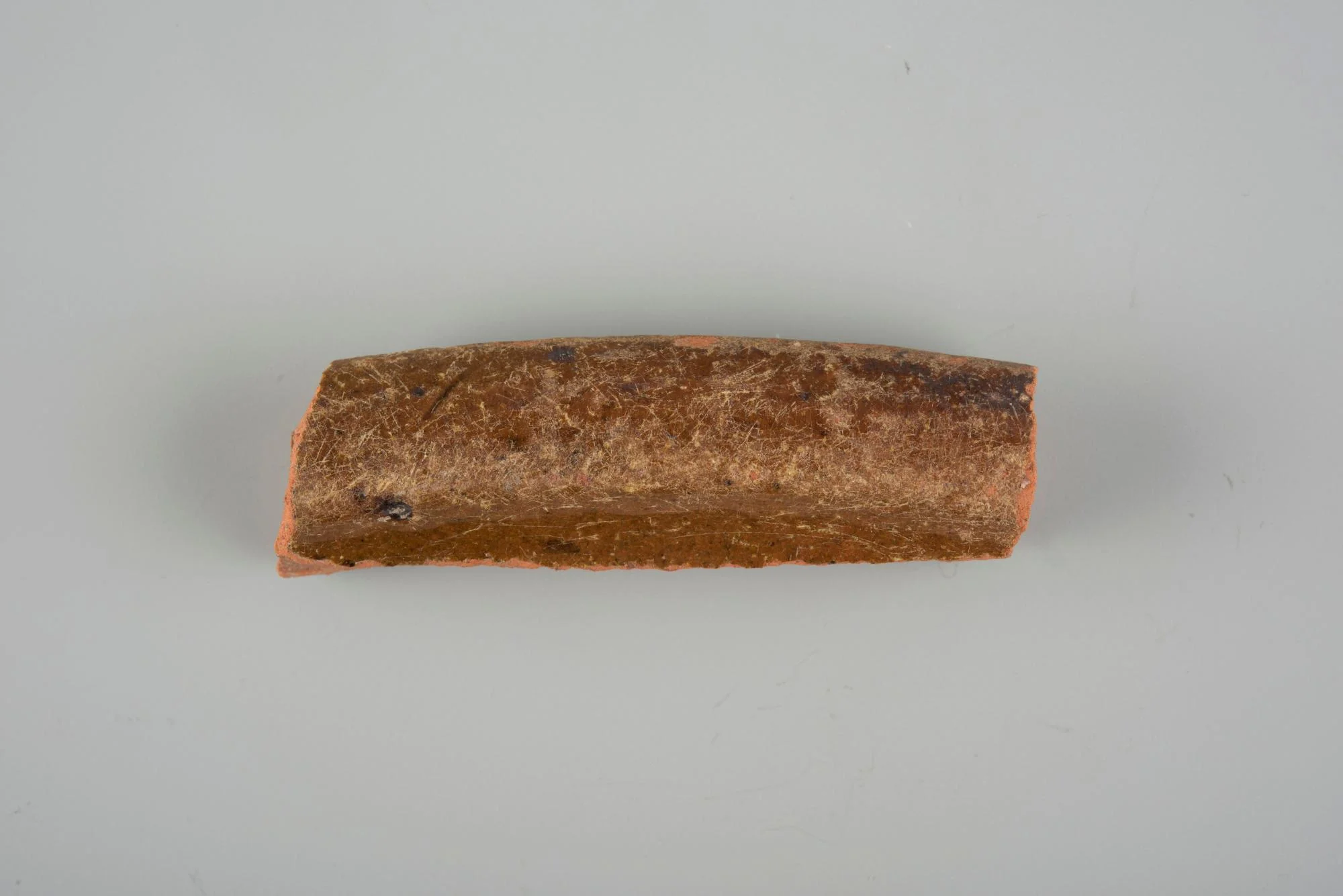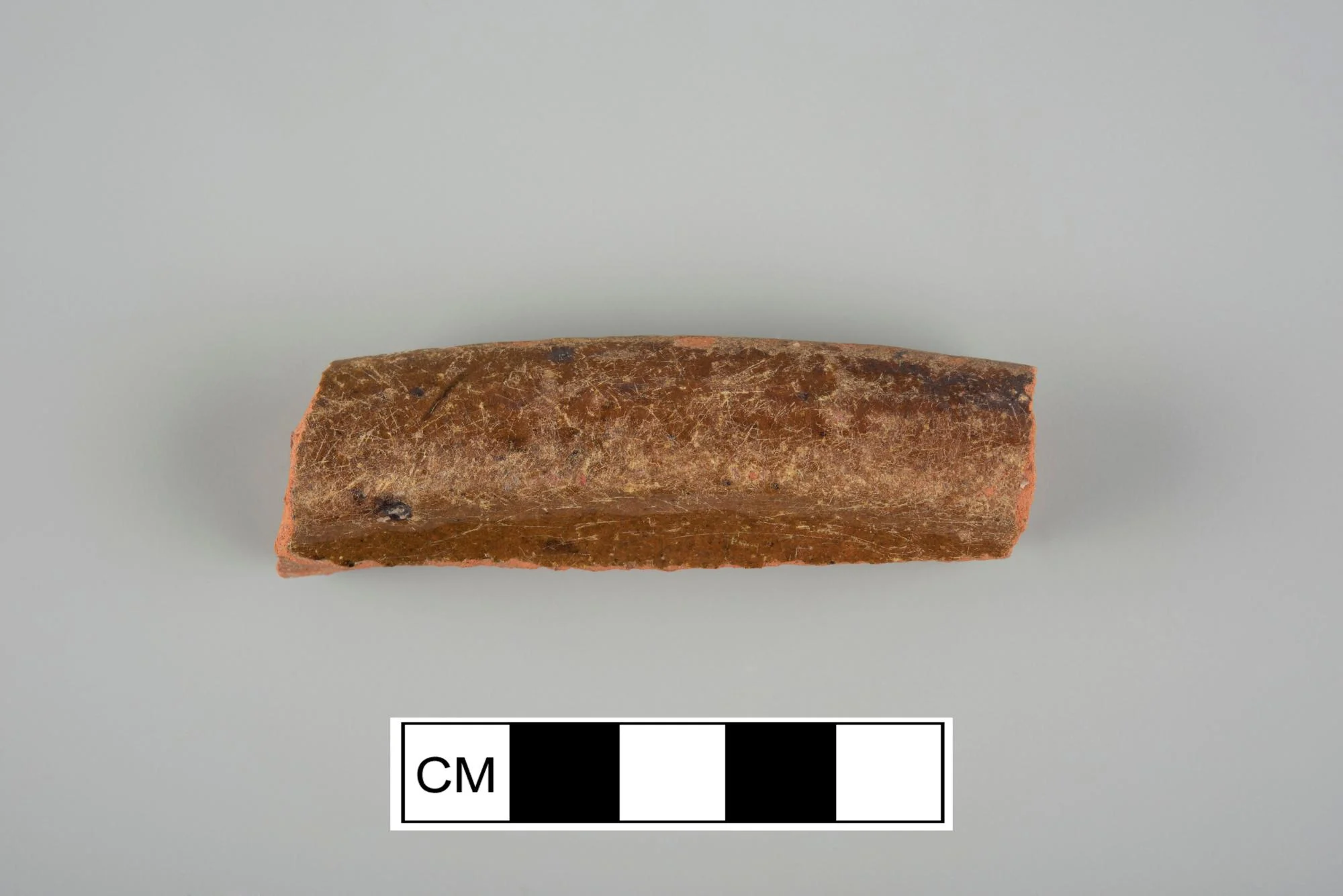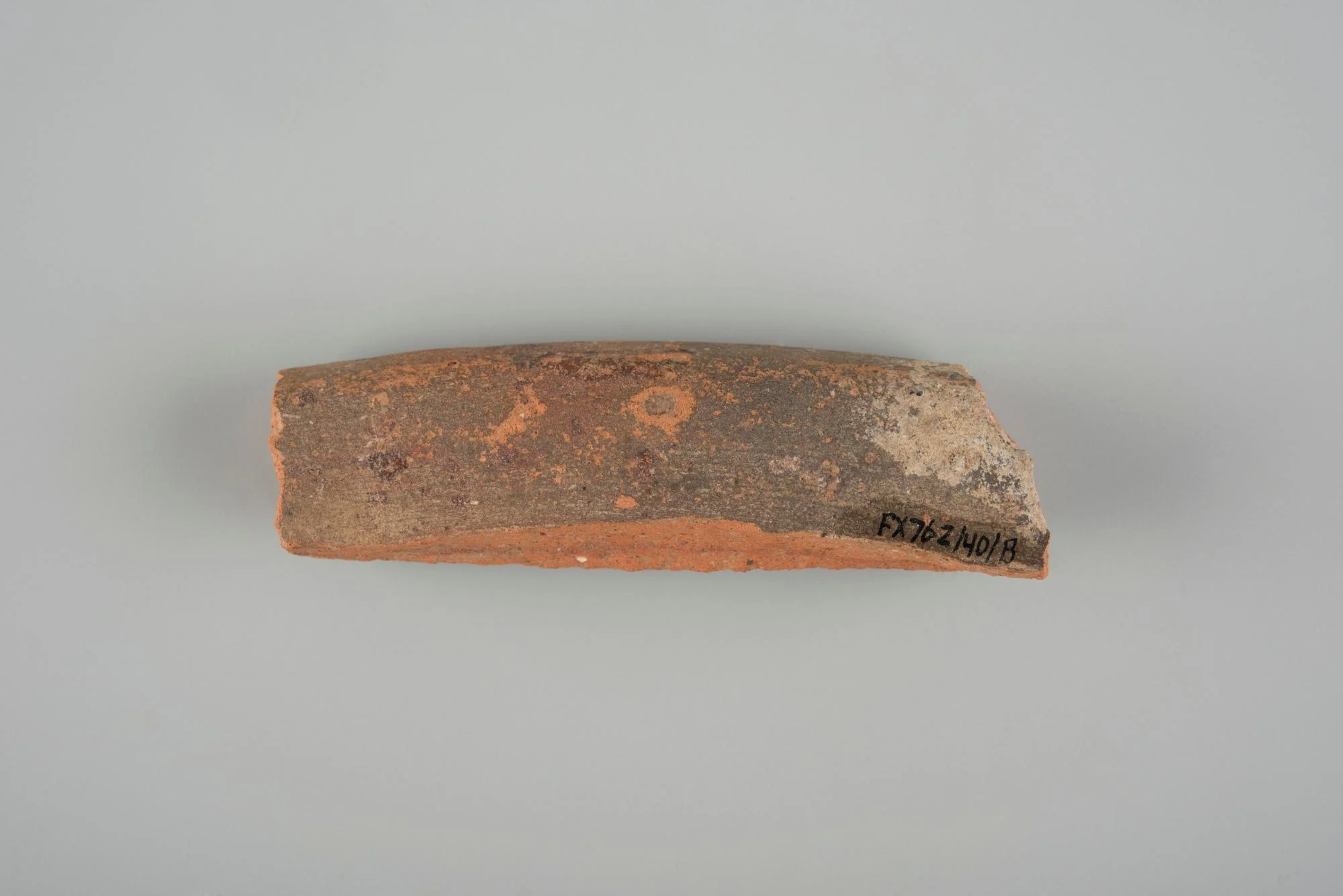Notes
This redware milk pan with a clear lead glaze on the interior of the vessel was likely made in London area potteries. Milk pans such as this example were often quite shallow and possessed a wide rim, which was often rolled for reinforcement. As the name suggests the vessel could be used for cooling milk and separating cream, but such wide dishes might be used for any variety of food preparation and serving tasks.
Such items were ubiquitous at Mount Vernon. Identical examples have been recovered from the excavations of the South Grove Midden, which is usually associated with the refuse resulting from Mount Vernon’s kitchen and dairy structures. These examples from both sites might be similar to the sixty-two “red milk pans” of various sizes Washington received from his London area merchant, Robert Cary, in 1763.
Object Type
Has it Been Conserved?
No
Where Was It Found?
Project Site: House for Families [more details]
Material
Vessel
Manufacturing Technology
Form
Completeness
Date
Country of Origin
Dimensions
25mm x 0mm x 75mm (W x H x L)
Illustration shows object in comparison to the size of a quarter
Weight
28.6 gram(s)
Object Number
1721888. COEW V.4
DAACS Number
1721888
Project: House for Families
The structure identified as the “House for Families” on the 1787 Vaughan plan likely housed the majority of the enslaved population living at the Mansion House Farm for much of the second half of the eighteenth century. The building was in existence from circa 1760 until it was demolished in late 1792 or early 1793. The archaeological evidence for the structure consisted of a brick-lined storage cellar (44FX762/40-47) measuring roughly six feet by six feet. Historically the cellar served as a handy trash receptacle once it ceased to be used for its original storage function, and through extensive excavation has yielded an extremely rich assemblage of household refuse. The analysis of these remains offers the opportunity to study important aspects of the daily lives of Mount Vernon's enslaved community.
See All Objects From this Dig


 Ceramic
Ceramic